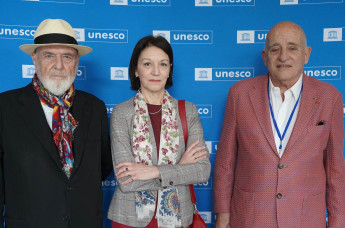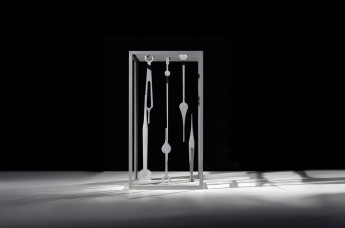Within the framework of the second edition of the International Biennial of Contemporary Art of South America, BIENALSUR 2019, the Sacred City of the Quilmes, in the imposing Calchaquí valleys, in Tucumán, will be the scene, from August 25 to 31, of the exhibition that gathers the works made in the "Turn" project by the Japanese artist Katsuhiko Hibino, who will also give a lecture open to the public on August 28 at the National University of Tucumán. Later on the 30th, he will give a lecture in Buenos Aires.
The "Turn" project was born as an artistic activity of social inclusion that seeks the exchange between people with different histories and knowledge, in minority communities, with the objective of provoking a transformation in the way of looking at and thinking about the surrounding world.
For the BIENALSUR 2019 edition, the Japanese artist Katsuhiko Hibino will exhibit in this mountain landscape formerly one of the most important pre-Hispanic settlements of the Calchaquí peoples, the exhibition gathering the works made by artisans of the Quilmes community together with the Japanese artists Mai Sone and Shogo Nunoshita.
On August 26 from 11 to 16, there will be a tour and an open workshop with the Japanese artist, accompanied by the artist Mai Sone and the workshop facilitators Alejandra Mizrahi and Paulo Vera, in the Sacred City of Quilmes; this place was the last bastion of resistance of the native people against the Spaniards. By giving in, they were forced to move on foot to the vicinity of Buenos Aires, the current city of Quilmes. Students from schools 213 and 217 of Quilmes and El Bañado will participate in this activity. That same day, from 15 to 17, there will be an activity with artisans in the Sacred City.
"Turn" is a project conceived by Katsuhiko Hibino for the Olympic and Paralympic Games that will take place in Tokyo in 2020, and is replicated in different countries.
To develop the second edition of Turn, (which was held for the first time in the 2017 biennial), BIENALSUR 2019, together with Katsuhiko Hibino, thought of the Argentine Northwest zone (NOA) and thus explore the exchange between two ancestral cultures such as the Japanese and that of the native peoples of the Diaguita-Calchaquí Valley in Tucumán.
With the instruction of bringing together, artists, a traditional craft technique and a community, in these meetings the Japanese technique of weaving Sakioro was explored in one workshop, and ceramic techniques in another, where a series of human figures in clay were made (with earth collected in Tucumán, but also in the area of Quilmes in Buenos Aires) to represent "the walkers", protagonists of that exile. The cooking was carried out using ancestral techniques.
Finally, to give an account of these experiences, the Japanese artist will give two lectures, the first on August 28 at 11 at the National University of Tucumán (Gral. José de San Martín 1545), and then on August 30 at 18.30 at the headquarters of MUNTREF Caseros (Valentín Gómez 4838), in the province of Buenos Aires.
Organized by the Universidad Nacional de Tres de Febrero (UNTREF), the second edition of the International Biennial of Contemporary Art of South America takes place from May to November 2019 with the participation of more than 400 artists, who present their works in simultaneous exhibitions, distributed in 43 cities of twenty countries, through more than one hundred venues with which BIENALSUR works jointly and collaboratively.




